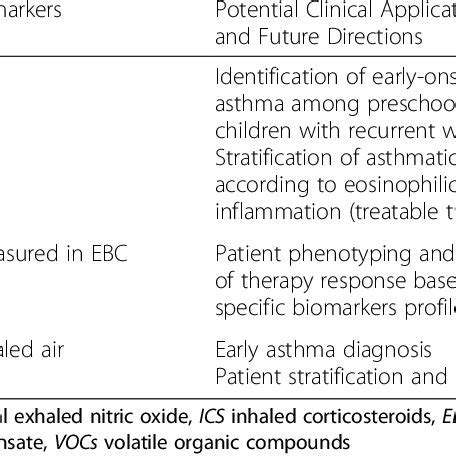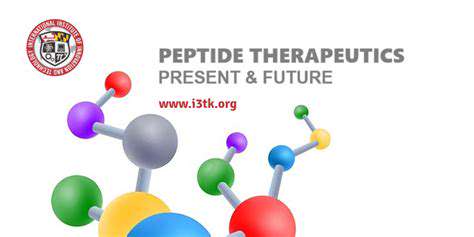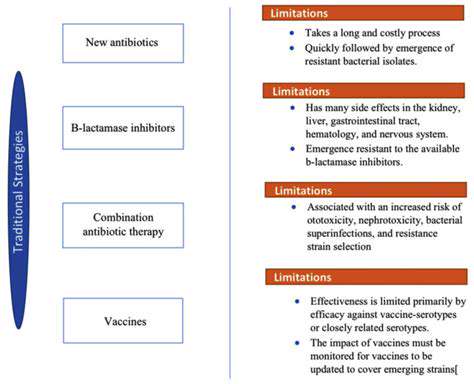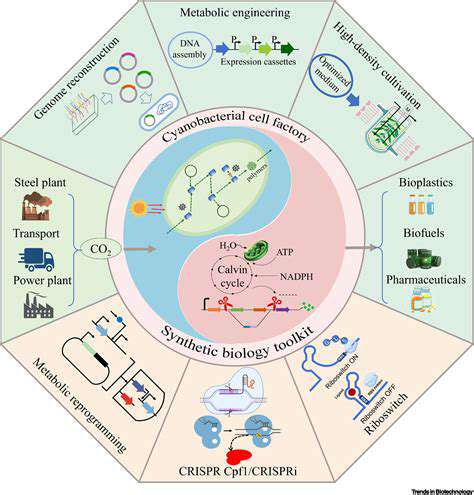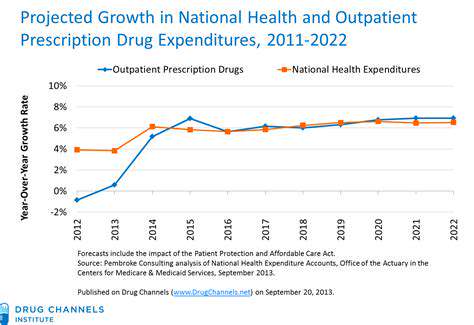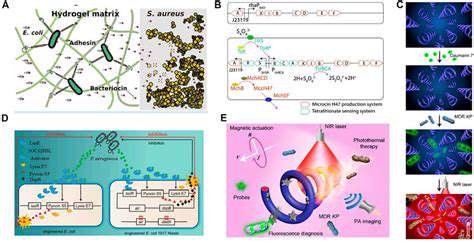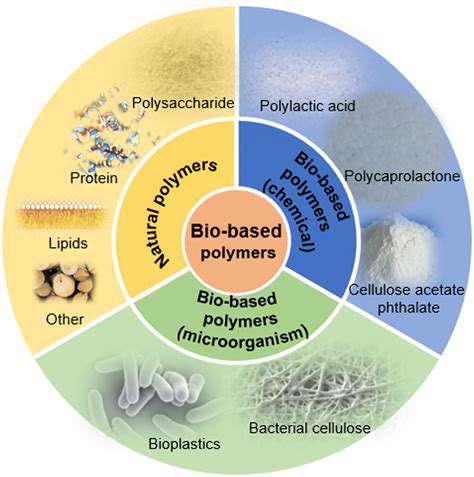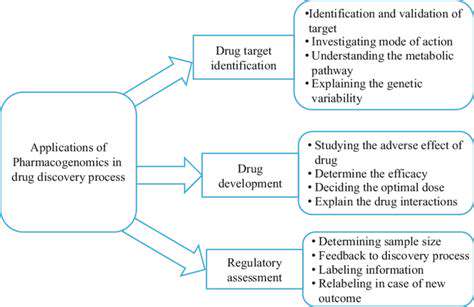Optimizing Microbial Performance and Productivity in Bioremediation Processes
Improving Microbial Growth Conditions
A crucial aspect of optimizing bioremediation processes lies in fostering favorable conditions for microbial growth and activity. This involves carefully controlling environmental parameters such as temperature, pH, and nutrient availability. Optimizing these factors ensures the microorganisms involved in the bioremediation process are healthy and actively engaged in degrading pollutants. For instance, maintaining a suitable temperature range can significantly enhance the metabolic rate of the microbes, leading to accelerated pollutant degradation. Careful consideration of these parameters also minimizes the risk of microbial stress and ensures a sustained, efficient bioremediation outcome.
Nutrient limitation can severely hinder microbial performance. Providing essential nutrients like nitrogen and phosphorus in the appropriate amounts can promote robust microbial growth and activity, leading to enhanced pollutant removal rates. Furthermore, the availability of trace elements, often overlooked, plays a vital role in maintaining optimal microbial function. Careful monitoring and supplementation of these crucial elements are essential for maximizing the bioremediation process's efficiency and sustainability.
Enhancing Microbial Activity and Specificity
Beyond optimal growth conditions, enhancing the specific activity of the target microorganisms is paramount. This involves strategies to increase the microbial population's ability to degrade the target pollutants. Employing specific microbial consortia or genetically modified organisms (GMOs) tailored to the specific pollutant can significantly accelerate bioremediation processes. The selection of appropriate microbial strains with high degradation capabilities is key to achieving effective and rapid pollutant removal.
Another important aspect is the use of biostimulation techniques. These techniques aim to enhance the natural microbial community's activity by providing them with suitable substrates and conditions. By introducing or increasing the concentration of electron donors or acceptors, we can stimulate the microbial population to further degrade pollutants. This method often proves more cost-effective and environmentally friendly compared to introducing external microbial cultures.
Furthermore, optimizing the contact between the microorganisms and the pollutants is critical. Techniques like mixing and aeration can improve the mass transfer of pollutants to the microbial cells, further accelerating the bioremediation process. This is particularly important for pollutants that are not readily available to the microorganisms.
Stimulating the production of extracellular enzymes by microorganisms can also enhance the efficiency of bioremediation. These enzymes can break down complex pollutants into simpler, more easily degradable molecules. Strategies to increase enzyme production can significantly improve the degradation rate and overall success of the process.
Challenges and Future Directions in Synthetic Biology-Based Bioremediation
Engineering Robust Microbial Consortia for Enhanced Degradation
Synthetic biology offers exciting opportunities to engineer microbial consortia capable of degrading complex pollutants more effectively than individual microorganisms. This approach involves designing and assembling microbial communities with optimized metabolic pathways and enhanced interactions. Developing stable and predictable consortia that can persist in diverse environmental conditions is crucial for practical bioremediation applications. Further research should focus on understanding the intricate interactions within these consortia to maximize their efficiency and resilience.
One area needing further exploration is the development of strategies to prevent the emergence of resistant strains during prolonged bioremediation efforts. The evolution of resistance to engineered enzymes or pathways could significantly limit the effectiveness of the bioremediation process. Researchers must consider the long-term stability and adaptability of the engineered microbial consortia to ensure their sustained performance in challenging environments.
Developing Novel Biocatalysts for Pollutant Degradation
Synthetic biology allows for the creation of novel biocatalysts with enhanced activity and specificity for degrading various pollutants. This involves modifying existing enzymes or creating entirely new ones with tailored properties, such as increased stability in harsh conditions, higher substrate affinity, or broader substrate scope. Optimizing the catalytic efficiency of these biocatalysts through rational design and directed evolution will be key to their successful application in bioremediation.
Furthermore, understanding the mechanisms by which pollutants interact with these biocatalysts is critical for designing more effective and targeted bioremediation strategies. This includes studying the kinetics and thermodynamics of the biocatalytic reactions, as well as the structural interactions between the biocatalyst and the pollutant molecule.
Addressing Environmental Factors and Scaling-Up Bioremediation Processes
Bioremediation processes are often influenced by environmental factors such as temperature, pH, nutrient availability, and oxygen levels. Synthetic biology needs to address the limitations imposed by these factors. Creating microbial strains that can function effectively in a wide range of environmental conditions will broaden the applicability of bioremediation strategies to diverse contaminated sites.
Scaling up bioremediation processes from laboratory settings to field applications is also a significant challenge. Designing strategies for efficient and cost-effective large-scale implementation, considering factors such as mixing, aeration, and nutrient delivery, is essential for practical applications. Robust methods for monitoring and controlling the bioremediation process in real-world settings are also required.
Economic Viability and Regulatory Considerations
The economic feasibility of synthetic biology-based bioremediation approaches needs careful evaluation. Cost-effective production of engineered microorganisms, efficient bioreactor design, and sustainable resource utilization are crucial for making bioremediation a viable alternative to conventional methods. Economic models need to be developed to assess the return on investment and compare the costs of different bioremediation strategies.
Furthermore, regulatory frameworks for deploying genetically modified organisms in environmental settings need to be developed to address public concerns and ensure the safety of these technologies. Thorough risk assessments and stringent safety protocols are essential to minimize potential environmental impacts and maintain public trust.
Integration with Other Remediation Technologies
Combining synthetic biology-based bioremediation with other remediation technologies, such as physical, chemical, or thermal methods, may significantly enhance the overall effectiveness and efficiency of the process. Optimizing the synergistic interactions between these approaches can lead to more comprehensive and sustainable solutions for contaminated sites.
Further research is needed to identify effective strategies for integrating synthetic biology tools with existing remediation technologies. This may involve developing hybrid systems that combine the targeted degradation capabilities of engineered microorganisms with the physical removal mechanisms of other methods, potentially leading to more comprehensive and cost-effective solutions.
Ethical Considerations and Public Perception
The use of synthetic biology in bioremediation raises important ethical considerations, particularly regarding the potential ecological impacts of engineered organisms and the long-term consequences of modifying natural ecosystems. Open dialogue and public engagement are crucial to build trust and address concerns about the ethical implications of such technologies. Transparency in research practices and responsible development and deployment of synthetic biology tools are essential.
Public perception of synthetic biology-based bioremediation is crucial for its successful implementation. Communicating the benefits and risks of these technologies in a clear and accessible manner to the public and stakeholders is essential to foster acceptance and support for these innovative bioremediation strategies.

